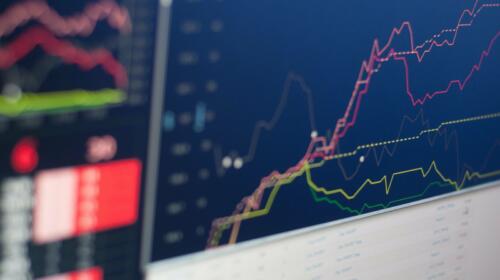How Do We Do It?
We start off this process by using what has been coined as a “Top Down, Bottom Up” approach. This simply means that we have the client provide us with their perceptions of their brand, current media attainment and industry trends. We then work to construct tailored Booleans, a type of search that combines keywords with operators such as AND, OR and NOT, to produce a relevant search result. We utilize these Booleans with measurement tools to conduct base scans of the media data related to the company and its competitors, to get a full view of the media landscape. When conducting these searches, we require a variance, or simply put, discrepancy or “junk data,” of less than 5% across all data sets. Using this approach enables us to create targeted Booleans that work to reduce variance and ensure that the data set provides a clear view of the company’s and competitors’ coverage.
Once the data set and analytics have been cleaned, we are able to look at individual company break downs, create analysis and compare all the companies against each other regarding their share of voice in the media, average authority level of articles and their share of conversation and content in industry topics. Tracking this type of media and industry conversations provide our clients with a clear path of their brand movement and strategy over time, showcases what current industry topics are of importance and helps them pinpoint where to insert themselves in the conversation.

Related: Debunking Myths About Market Research
Media Measurement aka the Wild West
Media measurement, often referred to as “The Wild West of Data”, can be a bit tricky to understand.
For example, when pulling media data, the research team looks at spikes in coverage and the number of articles that mention a company, person, industry term, or anything you want to look at over a certain period of time. The next step is monitoring the data and decipher what events or announcements are driving spikes in coverage. When displaying the results on a line graph, spikes represent a greater number of mentions or articles that the search terms are used in. When looking at this graph, you might be excited to see a giant spike representing the coverage from a big conference or event, but in reality, most of those mentions will probably be from low-authority press release syndications. In comparison, a highly relevant New York Times or Forbes article will count as one mention and may barely register on the trendline. While fewer eyes or individuals may read the press releases featuring company announcements, more people or the target audience that brands want to reach will be reading pieces from high-authority, top-tier sources.
Herein lies the problem intrinsic to media measurement, better phrased as the infamous saying “quantity does not mean quality.” There is no perfect way to measure it. In an ideal world, you would be able to find out how many people read an article, how long they stayed on the page, if they clicked forward to hyperlinks, shared the article through their network and if that article leads to a customer purchase for that company. Advances in technology may get us there soon, but for the moment, we are restricted to the data and measurement model that is available to us.
So, what can we do? Hold onto hope, not all is lost!
Related: Brand Health – Empathy, Suitability, Sustainability & Convenience
Step One: Reduce The Noise
Through a process often referred to as “reducing noise” individuals can apply filters and exclusionary terms to try and only see “earned media.” Sounds too easy, right? The problem is, most of the time a lot of the unearned media still filters through. The next step might be to go through the data file and manually remove coverage pieces. But that brings us to a greater question: doesn’t using subjectivity to remove pieces of coverage open the door to creating a non-repeatable, unstandardized process? Simply put, yes, somewhat, but there is an opportunity to course-correct. See step two.

Step Two: Explain Your Media Measurement “Recipe”
Create a standardized process that can be repeated in the future. Decide – Are you removing all press releases or just ones from certain outlets? Do you want to keep in mentions from industry reports? What authority levels do you want to use to limit the search? What inclusionary and exclusionary terms will you use in your Booleans? Should the search be limited to specific geographies? Determining all of these factors, listing the criteria and explaining the process allows you to replicate these searches time and time again with less variability while providing transparency and maintaining comprehensibility.
Step Three: Add Insights & Context
The best resource in creating valuable insights alongside media data is what you bring to the table. If you are working on PR for a client, you probably have a better idea of what events have driven coverage, what trending conversations your client has a voice in and where coverage can be improved than a list of dates and numbers of mentions. Use it! Data is most powerful alongside context and insights generated by your experience and knowledge.
Media measurement can be a great tool to analyze the amount and types of coverage your company is getting. Seeing what events or trends are driving coverage can be extremely helpful in looking at media strategy in the future but it is important to acknowledge the drawbacks of media measurement and recognize that more likely than not, it won’t give you all the answers you’re looking for. Taking these steps, setting expectations and maintaining transparency can lead you and your team to the finish line.
Related: How to Measure Brand Equity
Do you have any questions about media measurement? Contact the LEWIS Research Team and check out our market research services today!



